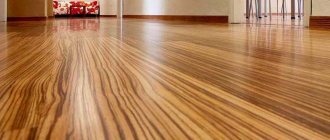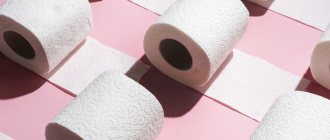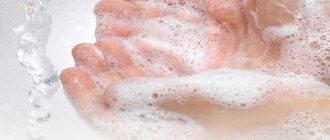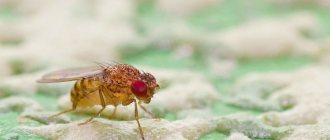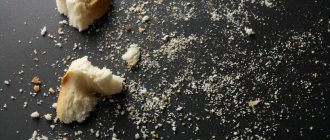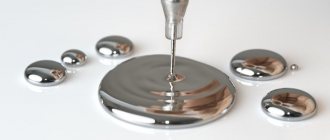How to soften hard material?
The high rigidity of cotton fabric is due to the processing of threads using special glue. To soften the material
It is necessary to wash the item of clothing several times with regular powder, and use conditioner when rinsing. After 2-3 such procedures, the textiles become softer.
Interesting materials:
How to wash curly hair? How to understand the unstressed Unchecked vowel of the root? How do you know if this is a catalytic reaction? How do you understand that this is a pronoun? How can you tell if gas is leaking? How can you tell if cabbage is young? How can you tell if a cat is getting old? How to understand that peritonitis has begun? How to understand that there is not enough potassium and magnesium? How do you know if you have a sprained leg?
Recipes for softening flax at home
Well, as promised, I’m sharing some secrets for softening linen fabric at home, which I found on the Internet and have already tried. 1. Enzyme wash is a wash with the addition of enzymes, the particles of which have a friction effect. That is, we need to wash in such a way that something has an additional effect on the fabric. You can load special fabric softening balls into the washing machine drum; they are available for sale online. Or you can (if you are not allergic to latex and rubber) load tennis balls or children's bouncy balls. When washing rubber, silicone latex products, you need to do it at low temperature. 2.Salt. The following solution helps soften linen fabrics very well: 4 tbsp. salts should be diluted in a bowl of water and the laundry should be left in it overnight, and then rinsed and washed in the morning. 3.Soda. Before you start washing, you should dissolve half a glass of soda in the water in which you are going to wash your clothes. Baking soda softens water and thereby softens laundry and clothing. 4. Massagers as ethnic rollers Previously, pieces of linen were rolled onto a relief roller and rolled with a relief spatula. Now we can take wooden massagers and try to recreate the process. The flax fiber that has swollen over night in salt water can be “fluffed” by giving it a long and high-quality massage. 5. Acid. Citric acid or vinegar added to the rinse water will help soften the laundry. Vinegar is not as effective at softening as baking soda. However, vinegar has one useful property: it removes detergent residues and unpleasant odors. 6.Shake! Flax likes to be shaken wet. Wash, wring out and shake, straightening the fabric. Then the fibers fall into place and are saturated with air. 7.Par. The still wet flax is removed undried and steamed. Ideally hanging so as not to “seal” the fabric. 8.Dry wash. The more you pull, wrinkle, squeeze, shake and rub the linen, the softer it will become. For long cuts, a good remedy is “braiding” and twisting strands. ****** In the photo, number 1 is linen from production, number 2 is after softening at home (soaking in salt, adding baking soda and tennis balls during washing). The fabric has become softer and denser. ****** Please check availability of fabric and accessories! And may your creative ideas come true!
How to iron linen correctly?
Linen items require special attention. Linen is a rather rigid natural fabric that can change during wear: over time it becomes softer. It takes a lot of sweat to iron a new outfit, but after a few washes everything will change.
Almost every housewife is confident that she irons her clothes correctly. But there are also things the ironing of which turns into hard labor. Not only are all the folds very difficult to smooth out, but they also wrinkle terribly. So is flax.
First, you should study the label with information about at what temperatures it is recommended to iron this wardrobe item.
Advice
Natural fabrics use higher temperatures than synthetic materials.
Step-by-step instruction
- The wet item must be removed; if it has already dried, moisten it.
- The temperature on the iron can be set to 200 degrees (unless otherwise indicated on the label).
- To prevent the fabric from shining after ironing, it must be ironed inside out. The use of wet gauze is also allowed.
- Linen is very difficult to iron to a perfectly smooth fabric, but small wrinkles will not spoil the overall picture.
- Linen items can be pre-sprayed with water. Then it will be much easier to smooth out all the wrinkles.
- It is better to iron all decorative elements on clothes (embroidery, beads, sequins) through gauze.
Linen clothing is very light and comfortable, so some difficulties with ironing will not prevent you from wearing your favorite item.
How to use seeds for weight loss
Colon cleansing invariably leads to slight weight loss and improved gastrointestinal function, but more can be achieved. With proper use of mucous jelly, appetite is reduced, overeating is prevented, metabolism is improved, and beneficial microelements and fatty acids will guard women's health and beauty.
How to brew and take flax seeds for weight loss
Action: Reduce appetite, improve metabolic processes, normalize stool, prevent constipation.
Ingredients: Seeds – 3 tsp. Water – 600 ml
Application: Sort out the flax, pour into a thermos, pour boiling water from the kettle, stir. Close and leave overnight. Open in the morning, stir, drink 30 minutes before breakfast. Repeat before lunch and dinner. It is important to stir so that the seeds in the drink are distributed evenly.
Rich decoction for weight loss
Action: Has a mild laxative effect, reduces hunger.
Ingredients: Flax seeds – 1 tbsp. l. Water – 500 ml
Application: Combine flax seeds with water, bring to a boil, reduce heat to low, cover the pan, simmer for 1.5 hours. Strain, take 0.3 cups 30 minutes before meals at least 4 times a day.
Video: Recipes for cooking flax for weight loss
Removing heavy stains
Sometimes difficult-to-remove stains remain on clothes (from grease, blood, paint, etc.) that cannot be removed after regular washing, so it is necessary to use special household chemicals.
Laundry soap
You need to rub the stain with a bar of dark laundry soap (72%) and leave for 10 minutes, then rinse and wash the entire item.
Brighteners and stain removers
For white and undyed linen items, you can use bleach and stain remover. Manufacturers produce a variety of products for removing stains of various origins. They come in the form of powders, gels, sprays, bar soaps, the main thing for washing linen is to use a product that does not contain chlorine and highly concentrated acids, as they destroy the fibers of the fabric.
- The stain remover is applied to the stain and left for some time to act. After this, the product is washed.
- If you need to use bleach, it is best to use a product based on active oxygen. It is gentle on the fabric, cleaning it without damaging it. Bleach is added to water and the item is soaked in this solution for 30 minutes, then washed.
Boiling
If the item is made of white or undyed fabric, it can be boiled without fear for quality.
- Pour water into a saucepan and put it on fire.
- You need to grate the laundry soap, add the shavings to the pan and stir well.
- Dip the item into the solution and boil for 10-15 minutes, turning occasionally.
Talc
Talcum powder is good for removing greasy stains.
Stains on a linen dress should be sprinkled with talcum powder and a paper towel should be placed on top. Place paper on the wrong side under the stain. Iron the top with a hot iron. Shake off the powder and repeat the procedure if necessary. Talc absorbs all the fat. And you already know how to wash something with powder.
Ammonia
Blood, grass and rust stains can be removed using ammonia. You need to add a teaspoon to a glass of cool water and dip the contaminated area of fabric into the solution. Leave for a few minutes, rinse and wash.
Salt
This method will help deal with sweat stains. A tablespoon of table salt is added to a glass of warm water, and a teaspoon of ammonia is also added there. The product is soaked in the solution for half an hour, then washed and washed.
Strong and durable linen fabric tolerates washing well, it is only important to follow a few basic rules. Carefully study the label on the clothing and follow the manufacturer's recommendations.
© 2022 textiletrend.ru
Why is linen fabric itchy?
To look for solutions to a problem, you must first find out why it occurred. Linen fabric can be pricked for the following reasons.
- Low quality source material for fabric production.
- Other fibers added to the fabric.
- Improper care.
Let's look at each of these points in more detail.
How does the type of flax affect quality?
Be sure to ask what linen your clothes are made from.
The material is obtained from a special plant: fiber flax. The quality of matter can vary not only due to different growing conditions of the plant, but also taking into account the methods of its processing.
For production, the stems of flax that have reached the required maturity are collected and processed. The resulting fibers are carefully combed and two types of threads are obtained .
- Delicate high-quality yarn for sewing clothes and household items (for example, bed linen).
- The remaining tow is used for yarn for the production of burlap and technical fabric.
Important! The worse the fiber is combed, the lower the quality of the resulting fabric.
Fabric structure
The strength of the material is ensured by the substance contained in flax fiber - lignin . In addition to it, the fabric contains other components: cellulose, of which about 80% is present in the fiber, vegetable fats, etc.
Reference! It is the lignin content that affects the stiffness of the fabric. The more it is, the coarser the matter.
Which flax is more likely to prick?
Flax is a capricious plant that prefers certain natural conditions. And the tactile properties of the fabric will depend on the area and climate in which it grew.
Foreign paintings
- Ireland is considered to be the producer of the highest quality linen fabric.
- France is second in terms of indicators.
- Italy came next in quality.
- China and other Asian countries close the list.
Russian flax
It is worth mentioning separately about Russia. It is not included in this list because, according to experts, our country produces both high-quality and low-grade fabric.
Correct iron
The iron plays an important role in this process. It must meet the following criteria.
- Pen. It is better to buy an iron in a store, then you can take it in your hand and try to see if it will be comfortable for ironing.
- Weight. It is better to choose heavier models - then you won’t have to lean your whole body to iron the linen fabric.
- Steaming system. If there is a lack of moisture, linen is almost impossible to iron. With a constant supply of hot steam, the folds can be easily removed.
- Sole. Irons with ceramic soles or non-stick coatings have proven themselves to be excellent. Then you won’t need to remove rust stains from your clothes.
If you follow all the tips for washing and ironing, linen items will delight you for a long time and will not cause much trouble.
General principles for preparing flax seeds
The seeds can be used whole or crushed. Typically a mortar or coffee grinder is used for crushing. It is important to know that after processing the product should not be stored for more than three days, as it contains a lot of oil. With prolonged exposure to heat and light, bitterness will appear and the amount of nutrients will decrease. Water, sometimes herbal infusions, and milk are used as an additional ingredient. How to brew and consume flax seeds depends on the recipe you choose.
The seeds can be boiled in a saucepan on the stove, steamed in a thermos for several hours, or brewed in a mug or in a jar without insulation is allowed. The goal of any method is to release mucus; the drink should acquire a jelly consistency. If you need to strain the infusion, use a strainer. It is advisable to squeeze out the seeds with a spoon.
How to wash linen by hand
- Add laundry detergent to a container with plenty of hot water (for undyed linen - up to 60 degrees, for dyed linen - 30-40 degrees). It is advisable to use liquid powder, as it dissolves and rinses better.
- When using regular powder, you must first mix it with a small amount of water and only then add it, mixing well.
- After washing, you need to thoroughly rinse linen items in plenty of warm water.
- To make linen fabric soft, you can use balms and fabric softeners.
